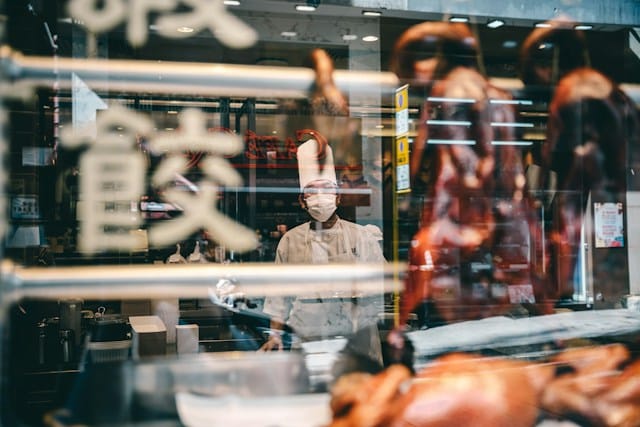What Are the Techniques for a Perfect Chinese Peking Duck?

Let’s journey deep into the heart of Beijing’s culinary scene. Today, we are discovering the magic behind the world-renowned Chinese Peking duck. This dish, with its luscious meat and crispy skin, takes centre stage at many dining tables across China and beyond. But how can you bring this traditional delight into your home kitchen? It’s time to don your apron, and let’s find out!
The Secret to Crisp Skin
The crowning glory of a Peking duck is its crisp, golden skin. The key here is to understand that achieving the perfect crunch is not a quick process. This indulgent dish requires time, patience, and a few tricks up your sleeve.
Lire également : What’s the Secret to Making a Moist and Rich Black Forest Cake?
A lire en complément : How Can You Elevate a Simple Chicken Roast to Gourmet Levels?
The first secret to crisp skin is to ensure you have selected a good duck. Look for a plump, fresh bird from a reputable source. The next step is to gently separate the skin from the meat. This is done by pumping air between the skin and the meat, which may sound complicated, but can actually be achieved using the sharp end of a meat hook, or a bicycle pump.
Sujet a lire : How Can You Elevate a Simple Chicken Roast to Gourmet Levels?
After this, you’ll need to blanch the duck. This involves dunking the bird in boiling water for a few minutes, then rinsing it under cold water. This process tightens the skin, getting it ready for the glorious crispy texture it will soon take on. The duck then needs to be dried thoroughly. This step is crucial, as any remaining moisture can prevent the skin from crisping up in the oven.
En parallèle : What’s the Secret to Making a Moist and Rich Black Forest Cake?
The Importance of the Marinade and Spice Rub
Flavour is king in any recipe, and the Peking duck is no exception. After the duck has been dried, it must be marinated. The marinade usually involves a concoction of soy sauce, hoisin sauce, and a selection of Chinese five-spice, ginger, and garlic. This marinade not only flavours the meat but also helps to tenderise it.
The inside of the duck is also usually filled with a spice rub. This adds an extra dimension of flavour and keeps the meat moist during the roasting process. Common ingredients for the spice rub include star anise, cinnamon, and Sichuan peppercorn.
The Art of Roasting
Armed with your marinated, spiced-up duck, it’s now time to turn your attention to the oven. Roasting a Peking duck is an art in itself, with the key to success lying in the duration and temperature of the roast.
The duck should be roasted at a high temperature for the initial 20 minutes to get the skin nice and crispy. The temperature is then lowered for the remainder of the cooking time to ensure the meat is cooked through without drying out.
The duck should also be turned a few times during the roasting process to ensure even cooking and browning. To achieve the perfectly crispy skin, during the last part of the roasting, you can brush the skin with a little oil.
The Right Way to Serve Peking Duck
Once the duck has been roasted to perfection, it’s time to think about how you’re going to serve it. In traditional Chinese cooking, every part of the duck is used. The skin is often served first, accompanied by pancakes, scallions, and sweet bean sauce.
The meat is then typically served with a variety of vegetables and a flavorful sauce. The remaining bones can be used to create a rich, hearty broth for another meal.
The key is in the cut of the duck. The slices should be thin and the skin should take center stage. The pancakes are the perfect vehicle for the duck- they are light, soft, and slightly chewy, providing a wonderful contrast to the crispy skin.
Perfecting the Pancakes and Sauce
The pancakes are an integral part of the Peking duck feast. They’re traditionally made from wheat flour, boiling water, and a little oil. The dough is rolled into thin circles and then cooked on a hot pan for a few minutes on each side.
The sweet bean sauce, also known as hoisin sauce, is another key component. It’s a thick, fragrant sauce that can be bought ready-made, or if you’re feeling adventurous, you can try your hand at making your own. The sauce is spread on the pancake before adding the duck, cucumber, and scallions, ready to be rolled up and savored.
There you have it, from selecting the perfect duck, preparing the skin, marinating and roasting, to serving with the traditional accompaniments of pancakes and sauce. Remember, practice makes perfect, and everyone’s cooking journey is unique. Enjoy the process and the reward will be a delicious Peking duck feast to share with your loved ones.
Mastering the Spice Powder
In the sprawling world of Chinese cuisines, spice powder is a defining feature that sets each dish apart. For Peking duck, the spice powder, also known as five-spice powder, is what elevates the dish from ordinary to exceptional. This aromatic blend typically consists of star anise, cloves, Chinese cinnamon, Sichuan (Chinese) peppercorns, and fennel seeds. The combination of these spices lends an intricate depth of flavor to the duck, making it a memorable feast for your taste buds.
When preparing your duck, remember to season the cavity with this spice powder for maximum flavor penetration. Rubbing it into the meat ensures that the flavors seep into the flesh, infusing the duck with a delicious, aromatic intensity.
The process of preparing your spice powder at home is simple. You may toast the spices first to bring out their inherent flavors, then grind them in a spice grinder or a mortar and pestle. By making your spice powder, you can control the freshness and quality of the ingredients. However, if you’re short on time, there are also store-bought versions available.
Whether you choose to make your own or buy it, the spice powder is a critical element in your Peking duck recipe, infusing the meat with a rich, warm, and aromatic flavor profile.
The Role of Hot Water and Time Management
In the preparation of a Peking duck, hot water, or more specifically, boiling water plays a pivotal role. As mentioned earlier, blanching the duck in boiling water is a key step that helps to tighten the skin, preparing it for that desired crispy texture. However, the use of hot water doesn’t just stop at blanching.
Hot water is also used in preparing the dough for the Mandarin pancakes that traditionally accompany the duck. Mixing boiling water with flour results in a softer dough, giving the pancakes their characteristic light, soft texture.
In terms of time management, the phrase "hour minutes" is often used in Chinese cooking, which refers to the time taken for specific processes such as marinating or roasting. For example, the Peking duck requires an initial high temperature roast for "20 minutes", which crisps the skin, followed by a lower temperature roast for a longer duration.
Remember, patience is key when preparing Peking duck. From the marinating, which could take several hours, to roasting and resting the bird, the entire process may span over two days. But the result – a perfectly roasted Peking duck – is worth the wait!
Conclusion
The path to perfecting the Peking duck is a culinary journey that requires patience, attention to detail, and adherence to traditional methods. From sourcing a quality bird to mastering the spice powder, using hot water in the right way, and serving with homemade Mandarin pancakes and sweet bean sauce, there are many stages to navigate.
Despite the complexity, the cooking process is part of the beautiful tapestry of Chinese culinary tradition. With each step, you’re not just preparing a meal, but also diving deep into a rich cultural heritage. Keep this save recipe handy, and with practice, you’ll be a master of the Peking duck in no time!
Remember to share your culinary adventures with others, through platforms like Facebook and Instagram. After all, the joy of cooking is magnified when it’s shared. Now, with these techniques under your belt, you’re fully equipped to serve a sumptuous Peking duck feast. Happy cooking!
